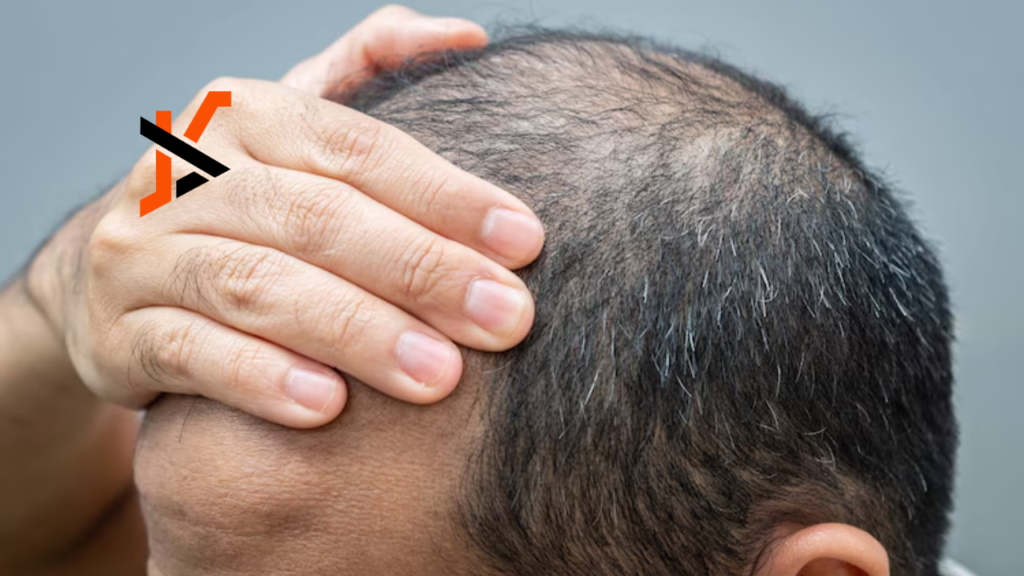Understanding the Genetic Blueprint of Hair Loss
Hair loss, a concern for millions worldwide, often finds its origins rooted in the intricate strands of DNA. Genetics determines how susceptible someone might be to conditions such as androgenetic alopecia, commonly referred to as male or female pattern baldness. This hereditary condition affects both genders, albeit with differing patterns and severities.
The Science Behind Hereditary Hair Loss
Each strand of hair grows from a follicle, a structure influenced heavily by genetic factors. Specific genes dictate the size of these follicles and their sensitivity to hormones like dihydrotestosterone (DHT). Increased sensitivity to DHT, which is also genetically determined, contributes significantly to follicular shrinkage over time, ultimately halting hair production. Interestingly, modern treatments targeting this hormonal pathway, such as Dutasteride, show promise but may present unique challenges, including potential side effects of Dutasteride, which must be carefully considered.
Can Lifestyle Choices Override Genetic Predisposition?
While DNA sets the stage, environmental factors play a supporting role. Proper nutrition, stress management, and avoiding harmful hair practices can mitigate some genetic predispositions. For example, diets rich in omega-3 fatty acids, biotin, and zinc promote healthier hair growth. Although lifestyle changes alone cannot completely override inherited tendencies, they can contribute to maintaining a fuller, healthier head of hair.
The Impact of Stress and Hormonal Changes
Stress significantly influences hair health, even in individuals with no family history of baldness. Chronic stress triggers a condition known as telogen effluvium, which accelerates the hair’s natural shedding phase. Coupled with hormonal fluctuations, this condition can exacerbate genetically driven hair loss.
Advances in Genetic Research and Hair Loss Solutions
The field of genetics has revolutionized approaches to addressing hair thinning and baldness. Scientists have identified over 200 genetic loci associated with hair loss, enabling the development of targeted treatments. These breakthroughs include gene editing techniques and personalized therapies tailored to individual genetic profiles.
How Genetic Testing Is Shaping Treatment Plans
Genetic testing kits now allow individuals to determine their risk of hair loss with remarkable precision. By analyzing specific markers, these tests help predict the likelihood of developing androgenetic alopecia. Armed with this knowledge, individuals can explore preventive measures or initiate treatments earlier, potentially slowing progression.
Traditional and Modern Treatment Options
Hair restoration solutions have evolved dramatically over the past decades. From topical applications and medications to advanced surgical procedures, a variety of options cater to differing needs and preferences.
Medications: A Double-Edged Sword
Popular pharmaceutical treatments like finasteride and Dutasteride work by inhibiting DHT production, effectively slowing or halting genetic hair loss. However, these drugs are not without drawbacks. While some individuals experience significant regrowth, others may encounter unwanted outcomes, including the side effects of Dutasteride, such as hormonal imbalances or skin changes.
The Rise of Non-Invasive Solutions
Laser therapy and platelet-rich plasma (PRP) treatments offer less invasive alternatives. These methods aim to stimulate dormant hair follicles, often with fewer risks than pharmacological approaches. While results vary, they provide hope for those hesitant to explore medication or surgery.
Exploring Surgical Interventions
For advanced cases where hair loss is extensive, surgical solutions like follicular unit transplantation (FUT) or follicular unit extraction (FUE) provide effective, albeit costly, remedies. These techniques involve transplanting healthy hair follicles from one area of the scalp to thinning or balding regions, delivering natural-looking results.
Balancing Risks and Benefits
Although highly effective, surgical interventions are not without potential complications. Scarring, infection, or uneven hair growth may occur, emphasizing the importance of selecting a qualified practitioner.
Beating Your DNA: Is It Possible?
Defying your genetic code entirely may not yet be within reach, but mitigating its impact is increasingly achievable. Combining modern medical interventions with lifestyle adjustments allows individuals to take control of their hair health. Advances in genetics promise an exciting future where tailored solutions may one day make hereditary hair loss a challenge of the past.
Conclusion: The Power of Knowledge
Understanding the role of genetics in hair loss empowers individuals to make informed decisions. By leveraging scientific advancements, personalized care, and proactive lifestyle choices, it is possible to counteract many genetic predispositions. While DNA remains a powerful determinant, the tools available today offer a promising path forward for those seeking to preserve their crowning glory.

